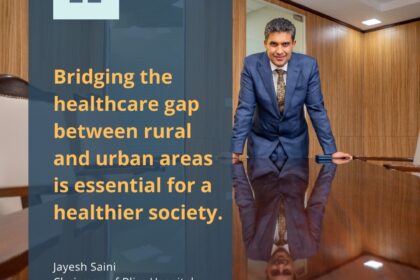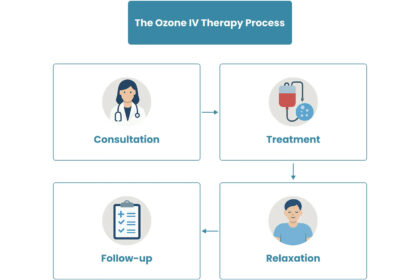Scaling the Mobile Miracle: Jayesh Saini’s Vision for Region-Wide Outreach Networks
On the remote roads of Turkana and Marsabit, where dust clouds replace highways and villages stretch for miles with no clinics in sight, mobile healthcare has already changed lives. But for Jayesh Saini, this is only the beginning.
The vans that now crisscross northern Kenya are more than just vehicles they’re prototypes of a healthcare future that could transform the continent.
Saini believes the same model that brought medicine to the deserts of Kenya can be replicated from the dry plains of Chad to the Sahel’s scattered settlements through a bold, technology-driven network of mobile outreach systems built for scale, sustainability, and self-sufficiency.
His message is simple: If hospitals can’t go everywhere, healthcare must move everywhere.
From Kenya’s Frontier to Africa’s Map
What began as a necessity in Kenya’s northern counties has evolved into a concept that could redefine how Africa delivers care.
Saini’s mobile outreach network, developed through the Lifecare Foundation, Bliss Healthcare, and Lifecare Hospitals, started as a response to geographic isolation. But its success measured in lives reached and trust rebuilt has revealed a larger truth: mobility isn’t a stopgap solution; it’s a new healthcare infrastructure.
“We proved that mobile healthcare works even where permanent hospitals fail,” Saini says. “Now the question is how to scale it sustainably, intelligently, and continent-wide.”
The Blueprint: Modular, Mobile, and Smart
Saini envisions a continent-wide network of modular outreach units designed to adapt to Africa’s diverse geographies from deserts to rainforests, highlands to islands.
Each unit would function as a mini-clinic on wheels, equipped with solar power, portable diagnostics, and cloud-connected health records. These clinics could operate independently or in clusters, coordinated through a central health command hub that tracks movements, data, and patient outcomes.
Key features of the proposed scalable outreach model include:
- Solar-powered mobility: To overcome unreliable electricity in remote regions, every vehicle runs on hybrid or solar-supported systems.
- Modular design: Units can be reconfigured for different missions maternity care, immunization, disease surveillance, or chronic disease management.
- AI-enabled patient records: Using artificial intelligence to flag risks, predict outbreaks, and guide follow-ups across borders.
- Satellite-linked telemedicine: Real-time connectivity between remote patients and specialists in urban centers or other countries.
- Community health integration: Local volunteers trained as health aides ensure that care continues between visits.
This is not just mobility it’s intelligent mobility.
Data as the New Engine
In Saini’s vision, every mobile clinic isn’t just a point of service it’s a node in a digital network. Each interaction generates data that feeds into a continental health intelligence system, helping governments and NGOs make smarter decisions.
By mapping disease prevalence, vaccination coverage, and supply needs, this real-time data could replace guesswork with precision. Policymakers could see where resources are needed most not after an outbreak, but before it happens.
“Mobility is what delivers care,” Saini explains, “but data is what drives change.”
This is how Africa’s mobile health revolution evolves from episodic relief to predictive prevention.
Scaling Without Strain
Sustainability lies at the core of Saini’s model. Unlike donor-driven initiatives that fade once funding dries up, his design prioritizes operational self-reliance through mixed funding blending government support, private investment, and community partnerships.
Each outreach network would operate like a franchise of compassion standardized in quality, localized in execution. County governments could co-own mobile fleets with private health providers, while NGOs could fund targeted interventions through shared infrastructure.
By pooling resources and technology, countries could build regional alliances mobile health corridors that serve border populations who currently fall through administrative cracks.
Technology That Travels
To make scalability viable, Saini is betting on portable innovation.
The Lifecare Foundation has already tested AI-assisted triage systems that help clinical officers diagnose and prioritize patients using simple mobile devices. Similarly, handheld ultrasound machines, digital stethoscopes, and portable labs make it possible to perform complex diagnostics in the most basic conditions.
These technologies reduce the cost per patient dramatically proving that smart systems can deliver both affordability and accuracy.
By standardizing mobile units with interoperable equipment, Africa could create a continental fleet of adaptable clinics, capable of deployment anywhere within days of need whether for an epidemic, disaster, or remote routine care.
The Human Core of the Model
Yet, despite its futuristic elements, Saini’s vision remains deeply human.
He insists that trust and consistency remain the foundation of every outreach mission. “Technology can move fast,” he says, “but people follow presence.”
His model continues to prioritize community integration, hiring and training locals as health navigators, translators, and educators. This approach not only extends care but also strengthens cultural legitimacy ensuring that technology amplifies compassion rather than replacing it.
From Northern Kenya to the Continent
The northern Kenya mobile missions have already inspired conversations with regional stakeholders in Ethiopia, Uganda, and South Sudan. Cross-border collaborations could see shared fleets of mobile units responding to seasonal disease outbreaks or refugee health needs.
The long-term goal: a Pan-African Mobile Health Network interconnected, interoperable, and inclusive.
In Saini’s words, “We have 54 countries solving the same problems separately. Imagine if we solved them once together.”
Conclusion: The Future Rolls Forward
From a handful of vans navigating Kenya’s toughest terrain, Jayesh Saini’s mobile outreach initiative has evolved into a vision for Africa’s healthcare reinvention one that travels on four wheels but runs on purpose.
His region-wide mobile health model proves that the continent’s most powerful hospital may not be built of concrete at all, but of commitment, connectivity, and collaboration.
If realized, this “mobile miracle” could mark the moment Africa redefines access proving that progress doesn’t always stand still; sometimes, it moves.

